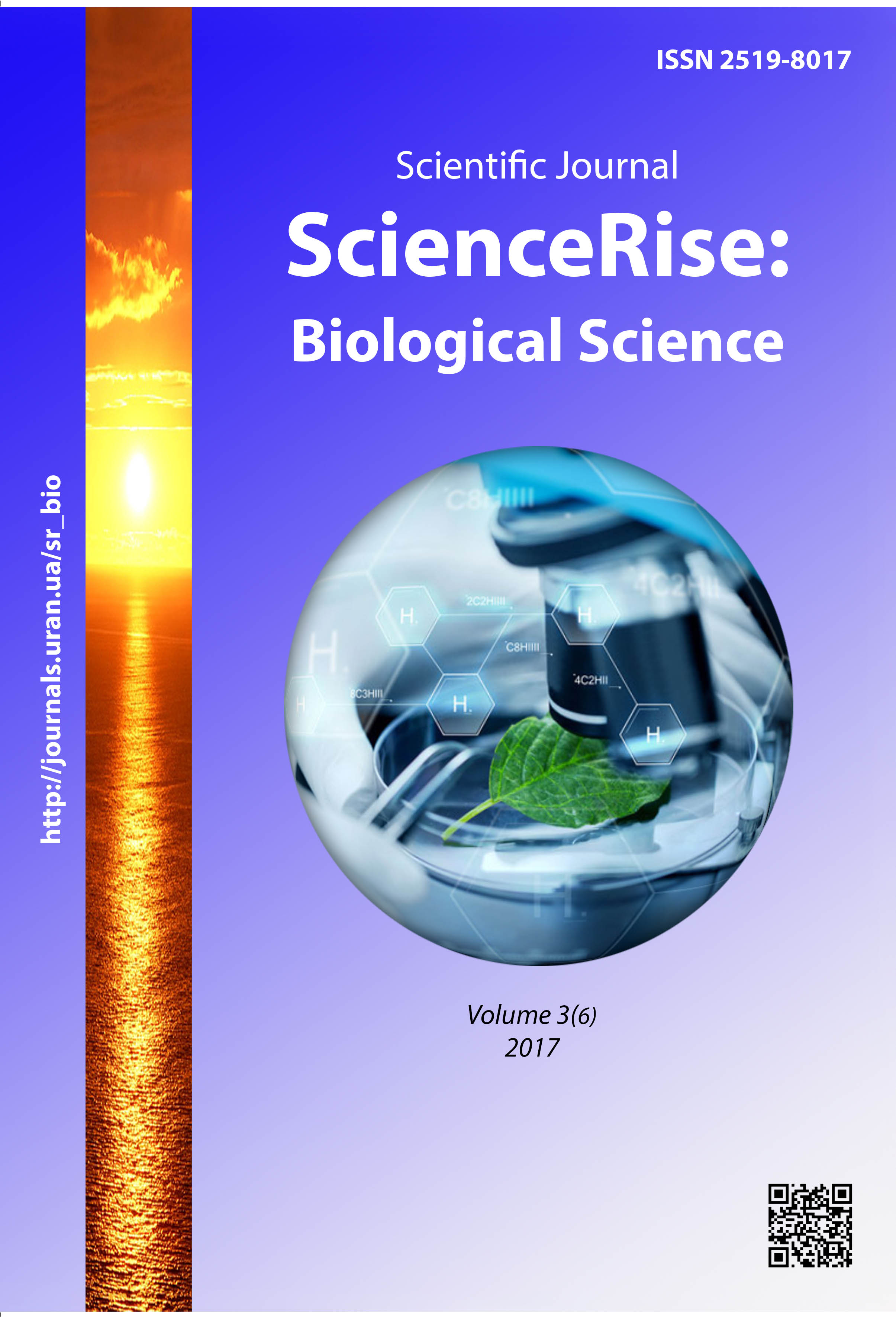Changing of needles lamina of Pinus L. species upon biotic factors influence
DOI:
https://doi.org/10.15587/2519-8025.2017.105011Keywords:
Pinus L., needle surface, adaptation processes, surface needle responseAbstract
Aim – to establish changes on the surface of needles affected by insects and infected pathogens, to show its differences from healthy needles and establish appropriate patterns.
Methods. Application of clear varnish on the surface of the needles with subsequent separation from reflection by adhesive tape. Further, the material was recorded with a light microscope equipped with a digital camera.
Result. It was found that the number of rows of stomata on the surface of needles varies depending on the nature of the effect factor. Differences are also important at the juvenile and generative stage. There is a difference between the number of stomata on the outer and inner sides of the needle, and also the relationship between them.
Conclusions. Based on this experience, it can be said that the morphology of the surface device of annual pine needles can serve as an indicator in determining the nature of biological damage to pine at different stages of development. The results also play an important role in understanding the mechanisms for protecting pine from pests and pathogens, and in developing a common adaptive strategy in plants
References
- Pristupa, G. K., Mazepa, V. G. (1987). Anatomo-morfologicheskiye izmeneniya khvoi sosny v tekhnogennykh usloviyakh [Anatomico-morphological changes in pine needles in technogenic conditions]. Lesovedeniye, 1, 58–60.
- Onuchin, A. A., Kozlova, L. N. (1993). Strukturno-funktsional'nyye izmeneniya khvoi sosny pod vliyaniyem pollyutantov v lesostepnoy zone Sredney Sibiri [Structural and functional changes in pine needles under the influence of pollutants in the forest-steppe zone of Central Siberia]. Lesovedeniye, 2, 39–45.
- Kizeyev, A. N. (2010). Radioekologicheskaya i fiziologicheskaya kharakteristika khvoi sosny obyknovennoy na Kol'skom Severe [Radioecological and physiological characteristics of pine needles in the Kola North]. Molodoy uchenyi, 3, 76–78.
- Bender, O. G. (2003). Morfo-anatomicheskiye i ul'trastrukturnyye kharakteristiki khvoi sosny sibirskoy (Pinus sibirica Du Tour) v Gornom Altaye [Morpho-anatomical and ultrastructural characteristics of pine needles of Siberian pine (Pinus sibirica Du Tour) in Gorny Altai]. Tomsk, 122.
- Gol'tsova, N. I. (1990). Vliyaniye radioaktivnogo zagryazneniya na strukturnyye osobennosti khvoi sosny obyknovennoy Pinus sylvestris L. (CHAES) [Influence of radioactive contamination on the structural features of pine needles Pinus sylvestris L. (ChNPP)]. Chernobyl-90, 1, 31–33.
- Kozubov, G. M., Taskayev, A. I. (2002). Radiobiologicheskiye issledovaniya khvoynykh v rayone Chernobyl'skoy katastrofy (1986–2001 gg.) [Radiobiological studies of conifers in the region of the Chernobyl disaster (1986–2001)]. Moscow: YPTS «Dizayn. Informatsiya. Kartografiya», 272.
- Dragan, N. V. (2002). Porushennya morfogenezu i tipovoi organizatsii vegetativnikh pagoniv sosni v tekhnogenno zminenikh yekotopakh [Violation morphogenesis and organization of a typical vegetative shoots of pine ecotypes in technologically modified]. Pitannya bioindikatsii ta yekologii Zaporizhzhya, 7 (2-3), 116–128.
- Synadskyy, Yu. V. (1990). Sosna. Ee vredytely y bolezny [Pine. Her pests and disease]. Moscow: Nauka, 344
- Lyamtsev, N. Y. (2012). Ochahy massovoho razmnozhenyya y vredonosnostʹ khvoehryzushchykh nasekomykh v sosnovykh lesakh Rossyy [Foci of mass reproduction and harmfulness of hvoegryzuschih insects in pine forests of Russia]. Yzvestyya Sankt-Peterburhskoy lesotekhnycheskoy akademyy, 200, 51–60.
- Malynovskyy, V. Y. (2010). Mekhanyzmy ustoychyvosty rastenyy k vyrusam [Mechanisms plants for virus]. Vladivostok: Dalnauka, 323
- Rositskaya, N. V. (2012). Adaptatsiya khvoi Pinus Sylvestris L. k vodnomu stressu [Adaptation of pine needles Pinus Sylvestris L. to water stress]. Aktual'nyye problemy ekologii. Grodno: GrGU, 60–61.
Downloads
Published
How to Cite
Issue
Section
License
Copyright (c) 2017 Evgen Yelpitiforov

This work is licensed under a Creative Commons Attribution 4.0 International License.
Our journal abides by the Creative Commons CC BY copyright rights and permissions for open access journals.
Authors, who are published in this journal, agree to the following conditions:
1. The authors reserve the right to authorship of the work and pass the first publication right of this work to the journal under the terms of a Creative Commons CC BY, which allows others to freely distribute the published research with the obligatory reference to the authors of the original work and the first publication of the work in this journal.
2. The authors have the right to conclude separate supplement agreements that relate to non-exclusive work distribution in the form in which it has been published by the journal (for example, to upload the work to the online storage of the journal or publish it as part of a monograph), provided that the reference to the first publication of the work in this journal is included.









